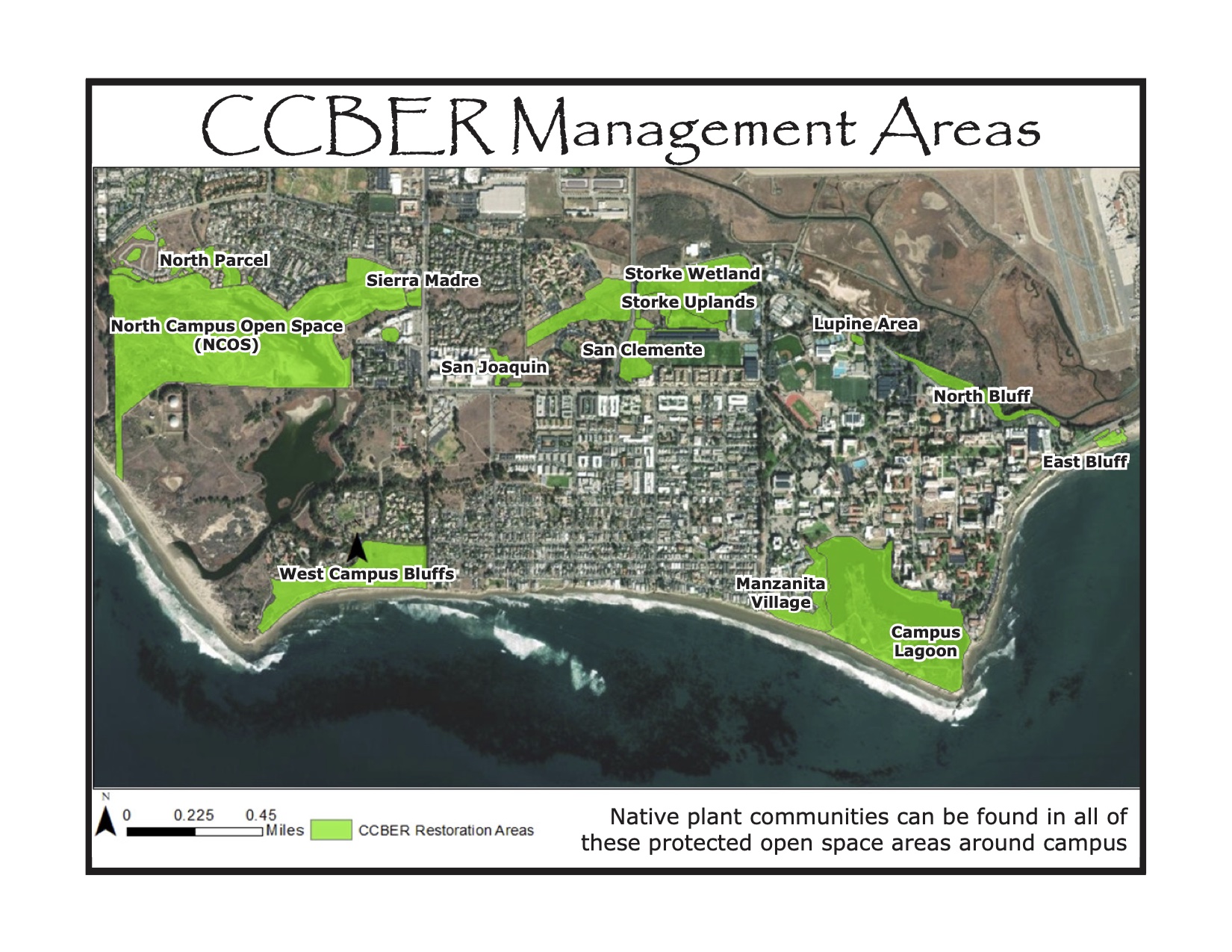Native Plant Habitats
Introduction
The Cheadle Center for Biodiversity and Ecological Restoration (CCBER) is a natural history museum within the Office of Research at UCSB. Staff preserve and study specimens from nature and conduct ecological restoration and natural areas management on over 340 acres of campus open space. The Center stewards our diverse and unique flora and fauna on campus lands and works on the recovery and research of federally endangered species in conjunction with USFWS. The Center educates students and community members through seminars, classes, tours and internships in restoration ecology and provides environmental consultation for campus administrators and others. An extensive museum collection of plant, insect, vertebrate, algae, and diatom specimens is permanently housed at the Center and is available to the campus community.
About this book
This book is meant to serve as a guide to help users identify the most common California native plants found in the primary native habitats on and around the UCSB campus. It is an abbreviated flora that does not include many native, or any non-native taxa. Each section begins with a general description of the habitat followed by photos and descriptions of the prominent species. Within each habitat, the species are arranged alphabetically by scientific name. Also included are the common name, Chumash name (when available), Spanish name, family name, general description of the plant’s growth form or other notable characteristics, and information about cultural or wildlife use. Most Chumash and Spanish names, and Chumash uses are taken from Chumash Ethnobotany (Timbrook, 2007). The Chumash spoke between 5 and 7 languages throughout their territory, and the names shown here are in Barbareño, the language spoken in Santa Barbara and Goleta. Generally speaking, the plants in CCBER’s natural areas are not only native species, but are local genotypes of these species. Local genotypes are the genetically unique forms of plants that have adapted various characteristics and are therefore distinct from other populations of the same species found elsewhere. The plants CCBER grows and installs on its natural areas are very carefully sourced to better understand and preserve these characteristics.
Nomenclature:
The plant names in this book and some botanical information is sourced from the Jepson Online Interchange California Floristics (http://ucjeps.berkeley.edu/interchange.html) as of January 3, 2011.
Disclaimer *
In some cases, uses of these plants as food or medicine are mentioned for educational purposes. The book is not meant to serve as a guide for the consumption of any plants or their parts. DO NOT collect or consume any plants for food or medicine without a qualified professional and, if applicable, landowner permission or regulatory permits.
California Native Plant Society. http://www.cnps.org
Indian Rock Native Garden. https://indianrocknativegarden.wordpress.com/indian-rock-catalog-56-pages/
Jepson Manual Project. http://ucjeps.berkeley.edu/jepman.html
National Park Service. Gardening for Wildlife with Native Plants. https://www.nps.gov/articles/000/gardening-for-wildlife-with-native-plants.htm
Smith, Clifton F. 1998. A Flora of the Santa Barbara Region, California, second edition. Santa Barbara Botanic Garden & Capra Press, Santa Barbara, California.
Timbrook, Jan. 2007. Chumash Ethnobotany: Plant Knowledge Among the Chumash People of Southern California. Santa Barbara Museum of Natural History & Heyday Books, Santa Barbara, California.
UC Santa Cruz. Plant Uses: California, Native American Uses of California Plants - Ethnobotany. https://arboretum.ucsc.edu/pdfs/ethnobotany-webversion.pdf
